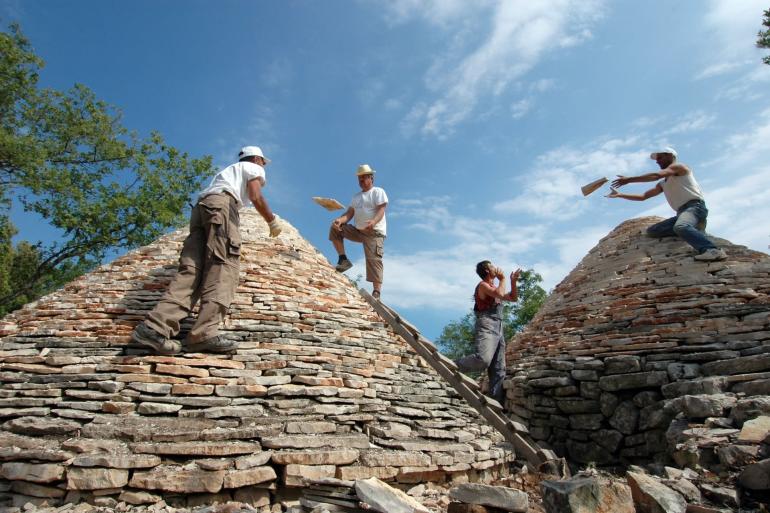Stone walls seem to be everywhere you look, just like the rugged hills, olive trees, and blue sea.
If you find them beautiful, then you should know that creating them is not a simple task. That's why the art of dry stone walling, practised in Croatia, Cyprus, France, Greece, Italy, Slovenia, Spain and Switzerland, was inscribed on the UNESCO Intangible Cultural Heritage list during a UNESCO meeting in Port Louis, Mauritius in December of 2018.
They fit like puzzle
In Croatia, those dry stone walls are called “suhozid” or “gromače”. And the special thing about them is the fact they are handmade without mortar to hold the stones in place. Instead, they were stacked stone by stone to fit like puzzle pieces. The technique is thousands of years old.
Many of these dry stone walls in Dalmatia, where the land is filled with rocks and rubble, were built out of agricultural necessity. Farmers painstakingly picked rocks out of the soil to clear space to grow olive trees and grapevines. They then used the rocks to construct walls around geometric plots, creating, in some cases, a grid that stretched for kilometres.
The appearance of dry stone walls often depends on the skill level. It isn’t an easy task to fit stones together so effectively that the walls stand for centuries without falling. It’s like a rustic game of Tetris that requires a lot more muscle, explains the Croatia Times.
Blocking the wind
A form also follows function. On Pag, dry stone walls weren’t created for agricultural purposes so much as to divide territory and corral sheep. And because the bura – a cold north wind – blows relentlessly over Pag during the winter, the stones aren’t simply stacked but instead follow a layered construction that effectively blocks the wind and gives the sheep a place to huddle and keep warm.
The dry stone technique was also used to build shelters that resemble small stone houses. The most elaborate of these is the cylindrical structures topped with skillfully constructed conical roofs specific to Istria, called kažun.
 Photo: Branko Orbanić/UNESCO
Photo: Branko Orbanić/UNESCOThe shelters that resemble small stone houses made without mortar are called "kažun" in Croatia
Art of dry stone walling concerns the know-how related to making stone constructions by stacking stones upon each other, without using any other materials except sometimes dry soil.
The stability of the structures is ensured through the careful selection and placement of the stones, and dry stone structures have shaped numerous, diverse landscapes, forming various modes of dwelling, farming and husbandry.
Preventing landslides, floods and avalanches
Such structures testify to the methods and practices used by people from prehistory to today to organize their living and working space by optimizing local natural and human resources. They play a vital role in preventing landslides, floods and avalanches, and in combating erosion and desertification of the land, enhancing biodiversity and creating adequate microclimatic conditions for agriculture.
The bearers and practitioners include the rural communities where the element is deeply rooted, as well as professionals in the construction business. Dry stone structures are always made in perfect harmony with the environment and the technique exemplifies a harmonious relationship between human beings and nature.
The practice is passed down primarily through practical application adapted to the particular conditions of each place.




